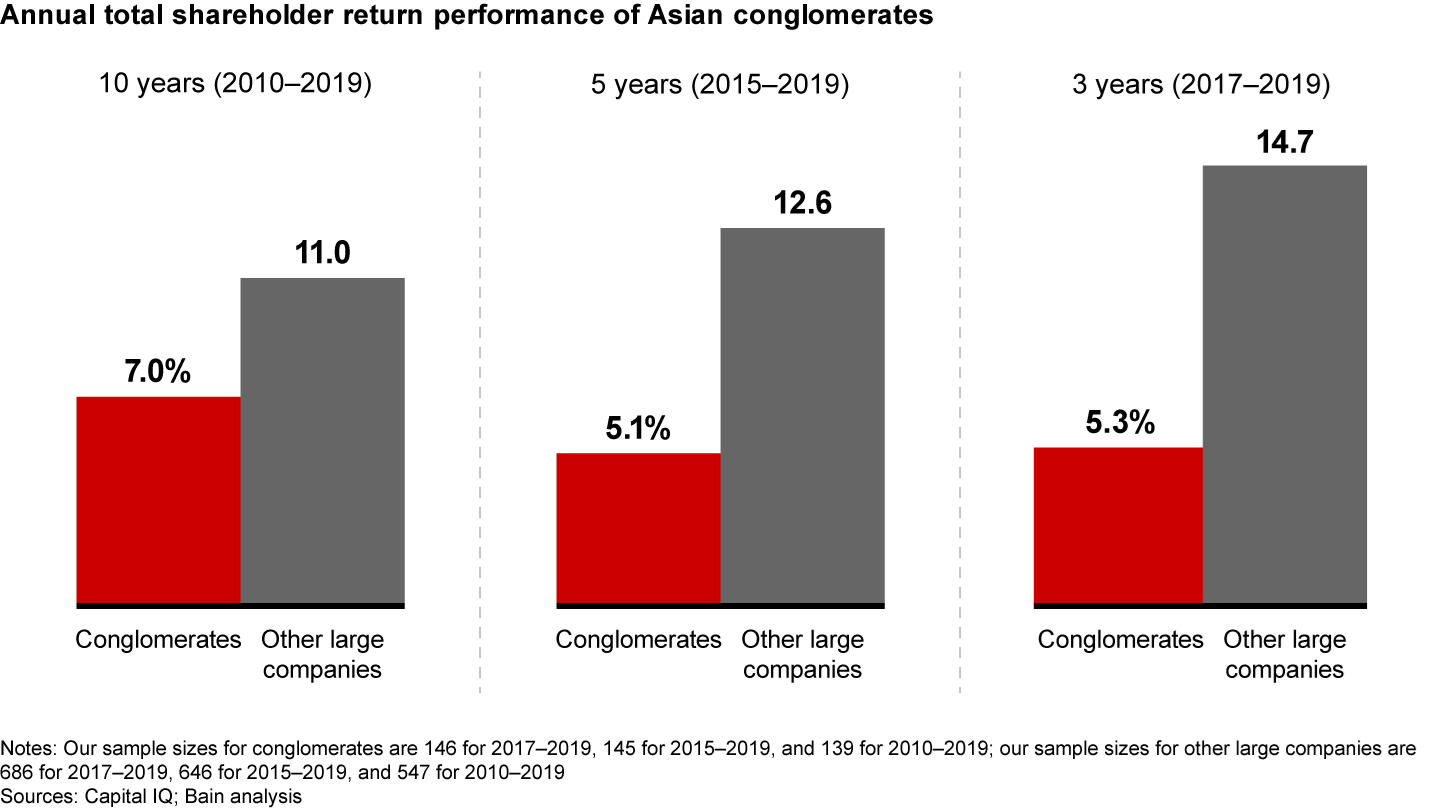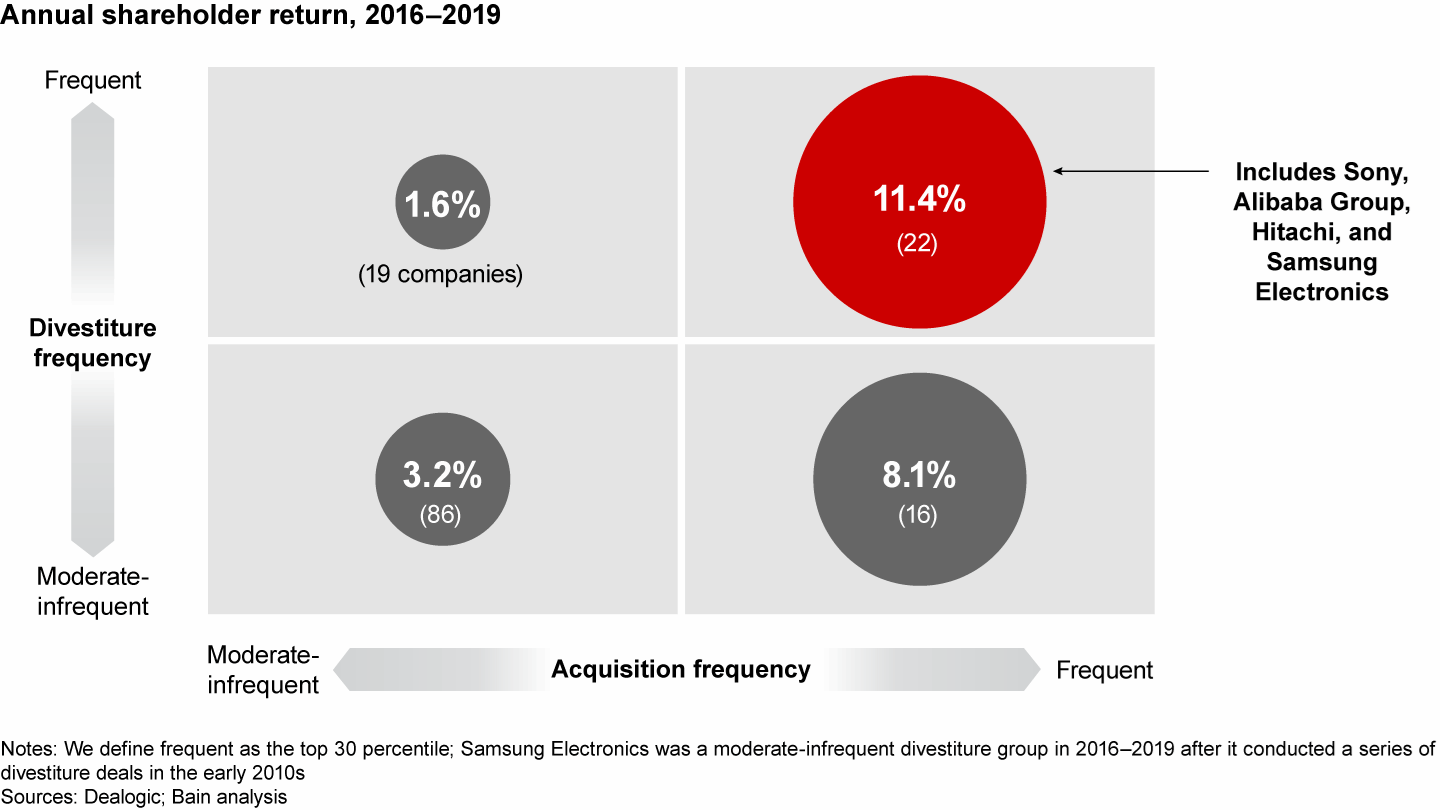M&A Report

Conglomerates in China, Japan, and Korea faced a conundrum. The diversified business model that served them so well for decades turned into a disadvantage. Bain’s analysis of nearly 150 conglomerates in the region found that, over the past 10 years, they achieved a lower total shareholder return (TSR) than pure play companies of similar size in the same market. And the performance gap is widening (see Figure 1). The major culprit: Lower growth and differences in industry multiples reflect the fact that many of the conglomerates are struggling because a large portion of their business is in unattractive industries or weak competitive positions.
Conglomerates in China, Japan, and Korea averaged lower total shareholder returns compared with pure plays in the same markets


Yet conglomerates that have diligently pruned their portfolios using both M&A and divestitures delivered three times the TSR of conglomerates that failed to actively manage their portfolios to focus on core businesses or new areas of opportunity in which they could gain a leadership position (see Figure 2).
Conglomerates in China, Japan, and Korea that were active in acquisitions and divestitures outperformed


After experiencing an $8 billion loss in 2009, Japan’s Hitachi announced that it would shift away from its comprehensive electronics conglomerate portfolio. In 2015, Hitachi began restructuring its portfolio to focus on integrated Internet of Things solutions. By the end of 2019, it had completed close to 45 acquisitions and more than 30 divestitures. The company acquired to fortify its core, systematically divesting unrelated businesses to fund the acquisitions. One example is the merger between Hitachi's automotive supplier business and three Honda affiliate suppliers as well as CBI, a European peer. Through this deal, Hitachi Astemo (name of the merged entity) will significantly enhance its leadership position in a core vertical market.
Korea’s Samsung Electronics used M&A and divestitures to shift its revenue mix dramatically over the past 10 years, adding significant heft to its portfolio with deals that increased its IT and mobile businesses. Throughout this journey, the company conducted more than 20 acquisitions and more than a dozen divestitures. Samsung Electronics regularly assesses each business's attractiveness and competitiveness with a long-term perspective. This discipline enabled timely divestiture decisions—such as the exit from its hard drive and printing solutions divisions at a strong valuation, a move that helped fund the growth of priority businesses.
Finally, China-based Alibaba has completed more than 35 acquisitions since 2011, always with two clear strategic objectives: continuing the growth momentum of its core e-commerce business; and developing media and cloud services as its second growth engine. Alibaba acquired multiple e-commerce platforms outside of China, maintaining more than 40% annual growth in e-commerce over the past five years. During this period, the media and cloud service business, expanding with the acquisition of players such as Youku Tudou, has grown by 75% annually. As it acquires, Alibaba also continues to trim its portfolio, focusing on its priority areas and keeping its management focus clear.
Alibaba
Replicating such superior results from M&A and divestitures requires disciplined capabilities that can be repeated to capture the most value from transactions. The best companies have a focused portfolio strategy and tightly aligned M&A and divestiture roadmap. They establish clear roles and responsibilities between M&A functions at the center and business units in all steps, from deal sourcing and prioritization through integration management.